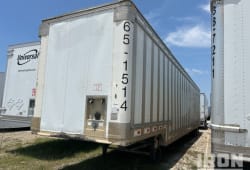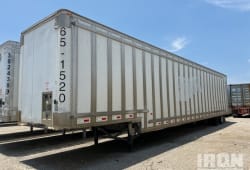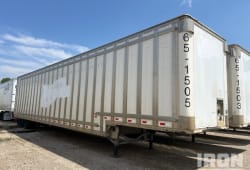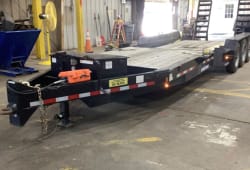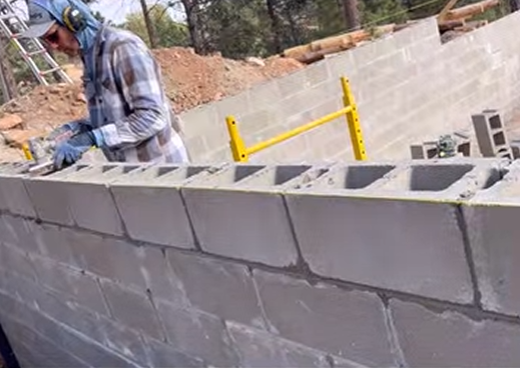The Backbone of Power: Navigating the Dynamics of Heavy Equipment Chassis
10 Min read
)
January 18, 2024
In the domain of heavy machinery, the term "chassis" often takes center stage, serving as the unsung hero that forms the backbone of power. As construction sites hum with activity and the earth is moved with precision, it is the robust chassis of heavy equipment that shoulders the weight, enabling these mechanical giants to navigate challenging terrains and execute tasks with unparalleled efficiency. In this comprehensive exploration, you will get to know about the dynamics of heavy equipment chassis, unraveling the intricate engineering, evolution, and significance that make it the true backbone of power in the world of construction and beyond.
Take a closer look at Heavy Equipment Chassis
At its essence, the chassis is the framework that supports and holds together the various components of heavy machinery. It is the structural foundation upon which the entire machinery rests. Composed of high-strength materials such as steel or alloy, the chassis provides the necessary rigidity and durability to withstand the intense forces and vibrations associated with heavy-duty operations.
1. Structural Engineering Brilliance
The design and engineering of heavy equipment chassis represent a remarkable fusion of strength and flexibility. Structural engineers carefully craft the chassis to endure the dynamic stresses encountered during operations while maintaining the flexibility required for efficient movement. The intricate balance achieved in chassis design is a testament to the amalgamation of advanced materials and engineering expertise.
2. Durability in Demanding Environments
Heavy machinery is often deployed in harsh and unpredictable environments, ranging from construction sites to mining operations. The chassis must withstand extreme conditions, including heavy vibrations, shocks, and exposure to elements. The durability of the chassis directly impacts the overall lifespan of the equipment and reduces the frequency of maintenance interventions.
3. Adaptability to Diverse Applications
Versatility is a hallmark of well-designed heavy equipment chassis. It must be adaptable to diverse applications and functionalities. Whether it's a bulldozer, excavator, or crane, the chassis serves as a universal platform that can be customized to accommodate different attachments and meet specific operational requirements. This adaptability enhances the efficiency and cost-effectiveness of heavy machinery.
4. Safety Assurance
Safety is a paramount concern in the heavy machinery industry. A robust chassis design contributes significantly to safety assurance by providing a secure foundation for the equipment's components. Through careful engineering and adherence to safety standards, the chassis mitigates risks associated with structural failures, ensuring the well-being of operators and those working in proximity to the machinery.
In the grand symphony of heavy machinery, the chassis emerges as the silent conductor, orchestrating strength, stability, and adaptability. It becomes evident that its significance extends far beyond being a mere structural framework. The intricate engineering, historical evolution, and contemporary innovations converge to define the backbone of power in construction, mining, agriculture, and various other industries.
Exploring the role of the chassis in equipment stability
At its core, stability in heavy machinery is the ability to maintain balance and control during diverse operational scenarios. Whether navigating uneven terrains, lifting heavy loads, or executing precise movements, equipment stability is crucial for ensuring the safety of operators, protecting the machinery itself, and optimizing performance.
1. Design for Stability: The design of the chassis is inherently tied to the stability of heavy equipment. Engineers carefully craft chassis structures to distribute loads evenly, preventing the risk of tipping or imbalance. The geometry, weight distribution, and materials used in chassis construction are all factors carefully considered to enhance stability.
2. Low Center of Gravity: Achieving a low center of gravity is a fundamental principle in chassis design for stability. By keeping the center of mass closer to the ground, the equipment becomes less prone to tipping over, especially in situations where it encounters uneven terrain or operates on slopes. This design feature enhances overall stability and operator confidence.
3. Dynamic Load Management: Heavy machinery rarely operates under static conditions; instead, it encounters dynamic loads during various tasks. The chassis plays a pivotal role in managing these dynamic loads, ensuring that the equipment remains stable and responsive. This capability is particularly crucial in scenarios where the equipment is subject to sudden movements, such as lifting or turning.
4. Navigating Uneven Terrains: One of the most challenging aspects of heavy equipment operation is navigating uneven terrains, a task that demands both precision and stability. The chassis, designed with this challenge in mind, becomes the key player in enabling equipment to traverse diverse landscapes without compromising stability.
5. Terrain Adaptability: The chassis design takes into account the need for adaptability to different terrains. Off-road conditions, gravel, mud, or rocky surfaces pose unique challenges, and the chassis must provide the necessary support and stability to ensure the equipment can operate effectively in such environments.
6. Articulated Chassis for Maneuverability: In certain types of heavy equipment, such as articulated trucks and loaders, an articulated chassis design enhances maneuverability. This design allows for improved articulation between the front and rear sections of the equipment, enabling it to navigate tight spaces while maintaining stability. Articulation is a key factor in achieving both agility and stability in challenging terrains.
7. Operator Safety and Confidence: Beyond the mechanical considerations, the role of the chassis in equipment stability directly influences operator safety and confidence. A stable chassis design contributes to a secure working environment, reducing the risk of accidents and ensuring that operators can execute tasks with precision and control.
8. Reduced Operator Fatigue: A stable chassis minimizes vibrations and shocks transmitted to the operator during operation. This reduction in mechanical stress enhances operator comfort and reduces fatigue, allowing for prolonged and focused work periods. Operator well-being is integral to overall safety and operational efficiency.
9. Enhanced Control and Precision: Stability translates into enhanced control and precision in equipment operation. Operators can confidently maneuver the equipment, position loads accurately, and execute tasks with greater finesse. This level of control is particularly crucial in applications such as material handling, where precision is essential for both safety and efficiency.
The impact of chassis design on overall machine performance
The chassis serves as the foundation, the silent conductor orchestrating the symphony of components that make up these mechanical giants. In this comprehensive exploration, you will get to know about the intricate relationship between chassis design and machine performance, unraveling the engineering complexities and innovations that shape the efficiency, durability, and versatility of heavy equipment.
The Blueprint of Power
1. Structural Integrity and Material Selection: At the heart of chassis design lies the pursuit of structural integrity and durability. The chassis is the structural framework upon which the entire machine rests, and its ability to withstand the intense forces, vibrations, and dynamic loads encountered in heavy-duty operations is crucial. Engineers meticulously select materials, often high-strength alloys or steel, to ensure the chassis can endure the rigors of its operational environment.
2. Geometry and Load Distribution: The geometry of the chassis is a critical aspect that influences load distribution. A well-designed chassis strategically distributes the weight of the machine, attachments, and loads to maintain balance and stability. The interplay between load-bearing elements, such as axles and suspension systems, determines the effectiveness of load distribution, impacting both safety and operational efficiency.
3. Chassis Rigidity and Flexibility: Achieving the right balance between rigidity and flexibility is an engineering challenge that defines chassis design. While rigidity is essential for stability and load-bearing capacity, flexibility is equally crucial to allow for shock absorption and adaptability to uneven terrains. The harmonious combination of rigidity and flexibility results in a chassis capable of providing a stable platform while navigating challenging environments.
Efficiency in Motion
1. Dynamic Load Management: The dynamic nature of heavy machinery operations demands sophisticated load management systems within the chassis. As loads shift and the machine engages in various tasks, the chassis must dynamically distribute weight to prevent imbalances and ensure stability. This capability becomes particularly crucial in applications like material handling, where precision and stability are paramount.
2. Adaptability to Terrain: Chassis design plays a pivotal role in the adaptability of heavy machinery to diverse terrains. Off-road conditions, rocky landscapes, or muddy surfaces require a chassis capable of providing traction, stability, and maneuverability. Innovations such as articulated chassis designs enhance adaptability, allowing machines to navigate tight spaces and challenging environments with ease.
3. Articulated Chassis for Maneuverability: In certain types of heavy equipment, such as loaders and articulated trucks, an articulated chassis design enhances maneuverability. This design allows for improved articulation between the front and rear sections of the equipment, enabling it to navigate tight spaces while maintaining stability. The articulation of the chassis is a key factor in achieving both agility and stability in challenging terrains.
4. Impact on Maintenance Requirements: The durability of the chassis directly influences maintenance requirements and, consequently, the overall lifecycle cost of the machine. A well-designed chassis minimizes wear and tear on components, reducing the frequency of repairs and replacements. This not only contributes to cost savings but also ensures that the machine remains operational for extended periods without significant downtime.
5. Resistance to Environmental Factors: Heavy machinery often operates in harsh environmental conditions, exposing the chassis to elements such as moisture, corrosive substances, and extreme temperatures. The chassis design incorporates protective measures, such as coatings and seals, to enhance resistance to environmental factors. This resilience contributes to the longevity of the chassis and, by extension, the entire machine.
6. Digital Intelligence and Telemetry Systems: The integration of digital intelligence and telemetry systems into chassis design marks a transformative era in heavy machinery. Sensors embedded within the chassis provide real-time data on various parameters, including load distribution, temperature, and stress levels. This information is invaluable for operators and maintenance teams, enabling proactive decision-making and optimizing machine performance.
7. Autonomous Chassis Control: The advent of autonomous technologies has extended to chassis control for heavy machinery, allowing for more sophisticated and precise machine operations. Autonomous chassis control systems leverage sensors, cameras, and artificial intelligence to navigate terrains, adjust to changing loads, and optimize stability. This not only enhances operational efficiency but also contributes to a safer working environment.
The impact of chassis design resonates as a defining melody. The blueprint of power, efficiency in motion, durability and longevity, technological integration, operator experience, and environmental sustainability-all orchestrate a harmonious performance under the guidance of a well-engineered chassis.
